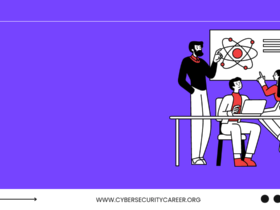Cyber security is a topic that has been making headlines for years. With the increasing number of data breaches, ransomware attacks, and other cyber threats, it’s becoming more important than ever to take steps to protect yourself and your business online. In this blog post, we’ll explore the current state of cyber security, the most common threats you should be aware of, and how you can safeguard against them. So grab a cup of coffee (or your preferred beverage) and let’s get started!
The current state of cyber security
Cyber security has become a top concern for businesses and individuals alike. With the rise of digital technology, we are more connected than ever before, but this also means that we’re more vulnerable to cyber attacks.
In recent years, there have been several high-profile data breaches involving major companies such as Equifax and Yahoo. These incidents highlight the fact that even large organizations with extensive security measures in place can still fall victim to cyber threats.
But it’s not just big corporations that are at risk. Small businesses and individuals are also targets for cyber criminals. In fact, according to a report by Verizon, 43% of all data breaches involve small businesses.
One reason why cyber security is so challenging is because new threats are constantly emerging. Hackers and other malicious actors are always finding new ways to exploit vulnerabilities in computer systems.
As a result, it’s crucial for individuals and organizations alike to stay vigilant when it comes to protecting their online presence. This means keeping software up-to-date, using strong passwords, being mindful of suspicious emails or messages, and taking advantage of available security tools like firewalls and antivirus software.
The most common cyber security threats
Cyber security threats are increasing day by day, and it’s essential to know about the most common ones. The first threat is phishing, where attackers create fake emails or websites to steal your personal information. They can also trick you into downloading malware onto your device.
The second is ransomware attacks, where hackers block access to your system until a ransom is paid. These types of attacks can cause significant damage to businesses and individuals alike.
Another common cyber security threat is password attacks using brute force methods, dictionary attacks or social engineering techniques. This involves guessing a user’s password by trying different combinations of letters and numbers or through deception tactics like spear-phishing campaigns that target specific groups of people based on their interests or affiliations.
Malware also remains one of the biggest cyber security threats today as it continues to evolve with new variations being created every year. Malicious software could be designed in such a way as to corrupt data files on an entire network or simply slow down individual machines so significantly that they become unusable.
Staying up-to-date with the latest cyber security threats and implementing appropriate measures will help protect yourself from these dangers online.
How to protect yourself from cyber security threats
Protecting yourself from cyber security threats is essential in today’s digital world. Here are some tips to help you stay safe online:
1. Use Strong Passwords: Create a unique and strong password for each account, using a mix of uppercase and lowercase letters, numbers, and symbols.
2. Enable Two-Factor Authentication: This adds an extra layer of security by requiring a code sent to your phone or email before logging in.
3. Keep Software Up To Date: Hackers take advantage of outdated software with vulnerabilities that can be exploited. Regularly update all applications on your devices to ensure they are secure.
4. Avoid Public Wi-Fi Networks: Public networks leave information vulnerable to interception by attackers. If possible, use a virtual private network (VPN) when accessing the internet away from home.
5. Be Cautious Of Suspicious Emails And Links: Don’t click on links or download attachments from unknown senders and always verify the source before providing any personal information.
By following these steps, you can significantly reduce your risk of falling victim to cyber attacks and protect yourself online!
The future of cyber security
As technology continues to advance, so do the methods and capabilities of hackers. It’s becoming increasingly important for individuals and businesses alike to prioritize cyber security measures in order to protect sensitive information.
The future of cyber security will require an ongoing effort to stay ahead of potential threats. This includes continued investment in research and development, as well as education and awareness programs for users at all levels.
It’s also likely that we’ll see increased use of artificial intelligence (AI) and machine learning (ML) in cyber security systems. These technologies can help identify patterns and anomalies that may signal a potential threat before it becomes a major issue.
In addition, there may be a shift towards more decentralized systems that rely on blockchain technology for enhanced data security.
The future of cyber security is both exciting and challenging. By staying informed about emerging threats and investing in robust protection measures, we can work together to keep our digital world safe.










Leave a Reply